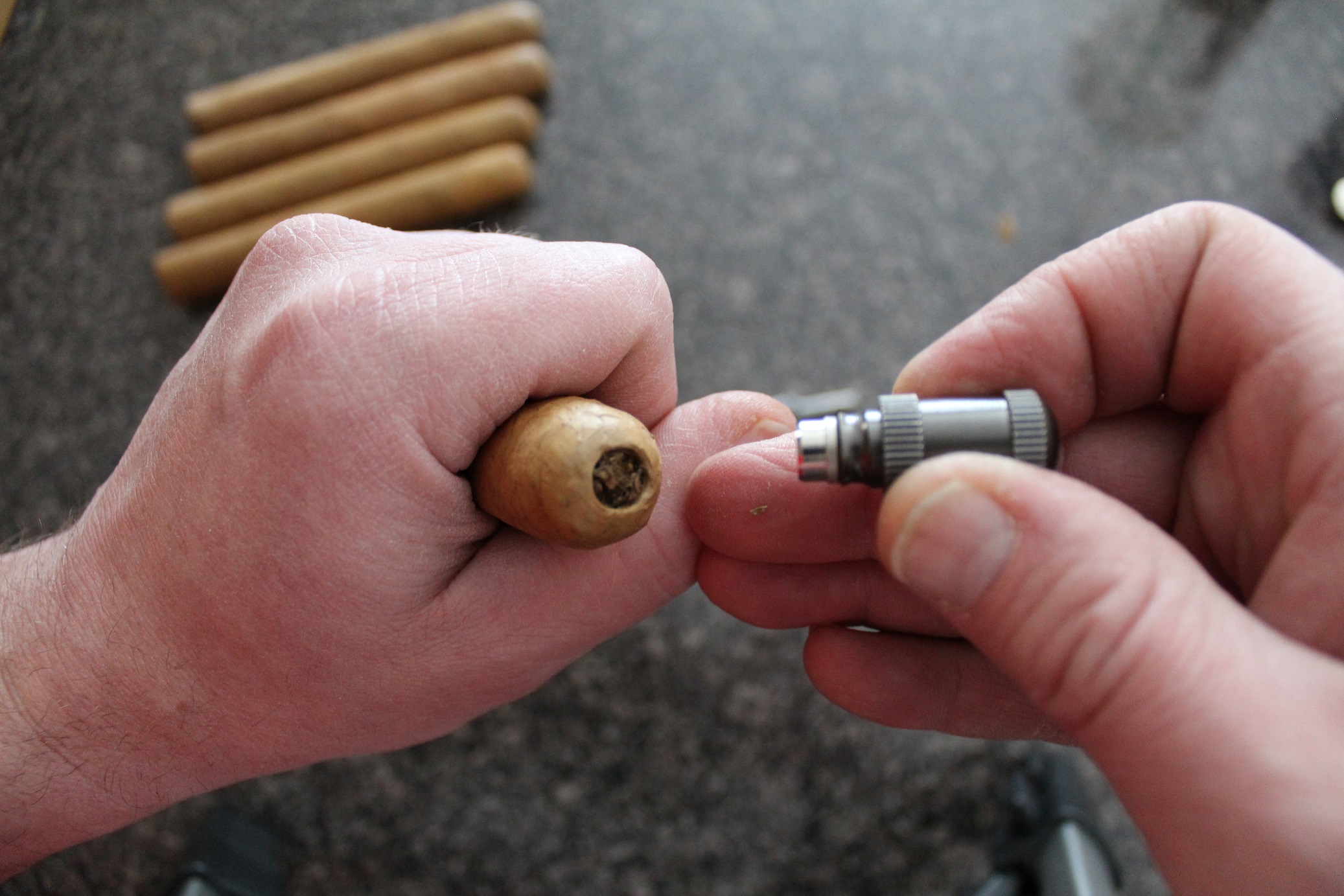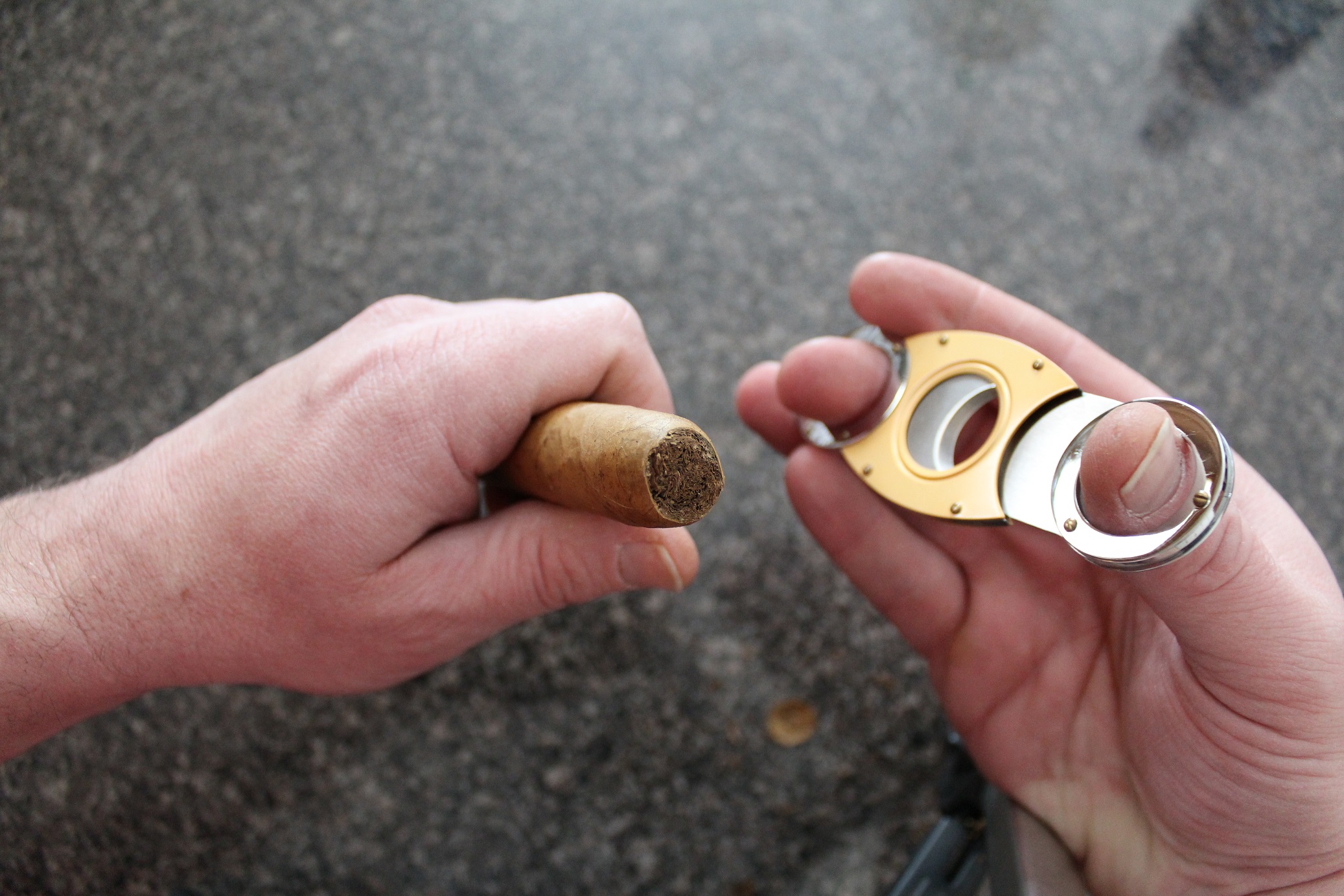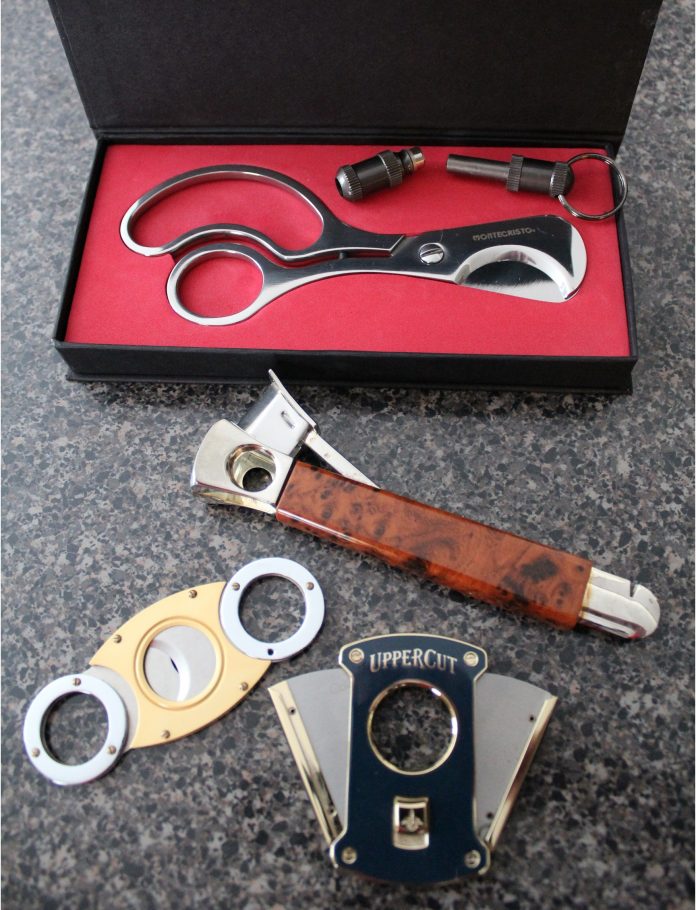The Basic Types of Cigar Cutters (clockwise from top) a cigar punch, a cigar scissors, a V-cutter, a grip cutter, a double bladed guillotine cutter
Few things will ruin the enjoyment of a fine, handmade premium cigar faster or more assuredly than a poor cut. Cut the head of your cigar too little and the result can be a tight draw and poor burn; cut too much and the cap of the cigar will lose its hold and the cigar will unravel. Luckily, with the right tool and practice, these perils are easily avoided.
One of the most important investments a cigar aficionado will make is in a quality cigar cutter. Cigar cutters come in a host of shapes, sizes, and types and the choices can be daunting to the new cigar smoker. But, fear not! With a solid understanding of the types of cigar cutters and their and limitations you can make a proper choice.
In this article we will look at two basic types of cigar cutters available, the cigar punch and the guillotine cutter, and discuss the pros and cons of each.
To begin, let’s look at the basic types of cutters. Cutters can be divided into the following categories:
– Cigar punches
– Guillotine cutters
– Grip cutters
– V-cutters
– Cigar Scissors
Now that we’ve seen the different types of cigar cutters, let’s take a look at the first two individually.
Cigar punch:
The cigar punch is probably the easiest of the cutter types to master. Comprised basically of a cylinder shaped cutting tube, the cigar punch is used by pressing the cutting edge against the center of the cigar’s head and plunging the cutter into the cigar with a twisting motion. And that’s the key, a twisting motion.
While punch style cigar cutters are easy to use, they are not without their limitations. If not used properly, cigar punches can crush the head of the cigar rather than cutting neatly resulting in a cracked cap and likely a crappy smoke. Another limitation of the punch style cutter is that the size of the opening created is fixed. A typical cigar punch will create an opening of sufficient size to allow a proper draw from cigars with a ring gauge around 50. This makes enjoying today’s larger ring gauge cigars difficult. Lastly, a punch style cigar cutter is of no use in opening a torpedo or other pointed head shaped cigar.
[For step-by-step instructions on using a cigar punch click here.]

The opening created in the head of a cigar using a punch style cigar cutter.
Guillotine cutter:
Guillotine cutters are likely the most popular type of cigar cutter in use today. Comprised of one or two extremely sharp blades, guillotine cutters open the cap of a cigar by removing a thin slice from the very tip of the cigar’s head. This cut creates a wide surface area opening and allows for optimal draw from your cigar.
Using a guillotine style cigar cutter takes some practice, but one mastered, this cigar cutter can open any shape of cigar head and most any size cigar, although for rings over 60 you may need a specially sized guillotine.
Guillotine cutters come in single or double bladed models and the choice between the two is a matter of personal preference. Regardless of the type of guillotine cutter used, the key to making a clean cut is to gently bring the blades of the cutter into contact with the head of the cigar at the point of the cut and with slight pressure and a twisting motion, score the cap with the blade and follow this with solid, quickly applied pressure to complete the cut. Without this scoring, you run the risk of tearing the cap of the cigar and tarnishing the smoking experience.
[For step-by-step instructions on using a guillotine cutter click here.]

The wide opening created using a guillotine type cigar cutter.
Regardless of the type of cutter you choose, remember that in the end it is a matter of preference and of utility. If you prefer torpedo style cigars, don’t buy a cigar punch; if you smoke nothing but corona sized cigars, a cigar punch could become your best friend. Luckily, there are hundreds of cutter options available to the cigar smoker; some utilitarian, some exotic, some sublime.
If you’re in the market for a new cutter, check out Mike’s Cigars offerings! I can all but guarantee you’ll find just what you’re looking for!
Next week, we’ll cover the remaining types of cigar cutters: grip cutters, V-cutters, and the cigar scissors.






[…] Part One of our two part series on cigar cutters we looked at two of the most popular tools available to the smoker of premium cigars: the cigar […]